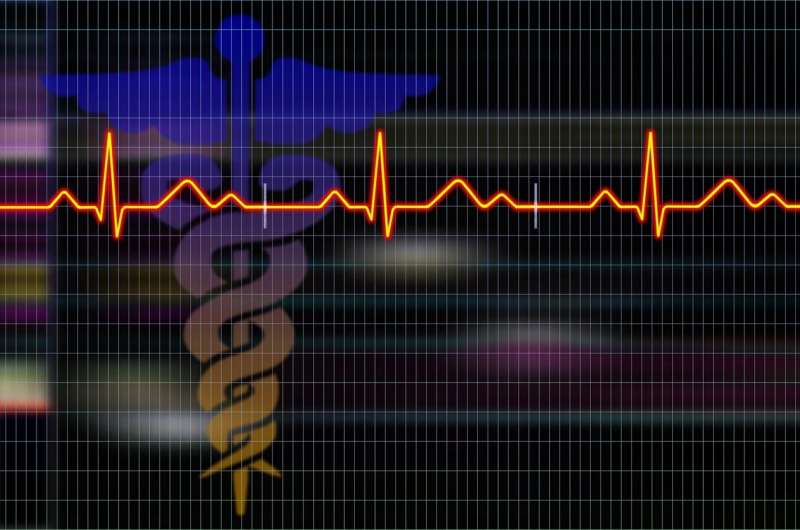This article has been reviewed according to Science X's editorial process and policies. Editors have highlighted the following attributes while ensuring the content's credibility:
fact-checked
trusted source
proofread
A child's race, ethnicity and/or neighborhood may influence survival after cardiac arrest

Children's survival and recovery after a cardiac arrest may be impacted by their race, ethnicity and/or the neighborhood where they live, according to preliminary research to be presented at the American Heart Association's Scientific Sessions 2023. The meeting, to be held Nov. 11–13, in Philadelphia, is a premier global exchange of the latest scientific advancements, research and evidence-based clinical practice updates in cardiovascular science.
"We continue to see racial, ethnic and socioeconomic differences in cardiac arrest survival despite the current strategies we have implemented to improve cardiac arrest survival," said study lead author Cody Gathers, M.D., a pediatric critical care fellow at Children's Hospital of Philadelphia and a postdoctoral research fellow at the University of Pennsylvania.
While relatively rare, more than 7,000 infants and children have an out-of-hospital cardiac arrest per year in the United States, according to data from the Cardiac Arrest Registry to Enhance Survival (CARES) included in the Association's 2020 Guidelines for Cardiopulmonary Resuscitation and Emergency Cardiovascular Care.
Cardiac arrest in children and teens can occur after a blow to the chest in a football or baseball game. Additional causes of a cardiac arrest in infants and children include respiratory issues, such as pneumonia, aspiration, smoke inhalation or drowning. Additionally, infectious factors like sepsis or meningitis, as well as cardiac factors including arrhythmias and enlarged hearts, may contribute to these events.
Previous research has found racial, ethnic and socioeconomic disparities in the aftermath of adult cardiac arrest, with worse survival outcomes among Black adults and adults of other races or ethnicities in a lower socioeconomic status.
Researchers evaluated data from the CARES registry to evaluate racial, ethnic and socioeconomic disparities in the number of nontraumatic out-of-hospital cardiac arrests per year and disparities in survival outcomes.
Their analysis of 6,945 cardiac arrests in 41 states found:
- The rate of out-of-hospital cardiac arrest in Black children was more than four times higher (15.5 per 100,000) than in white (3.8 per 100,000) or Hispanic (3.3 per 100,000) children. The majority of out-of-hospital cardiac arrests occurred in children younger than 5 years old.
- Hispanic and white children had similar odds of survival and neurologically favorable outcomes. In contrast, Black children were 26% less likely to survive to hospital discharge and 36% less likely to survive without neurological issues that impaired them to resume their daily activities.
- 41% of out-of-hospital cardiac arrests occurred in the highest-risk neighborhoods, with an incidence of 11.6 per 100,000 children in the highest-risk neighborhoods vs. 4.3 per 100,000 children in the lowest-risk neighborhoods.
- Compared to children in the highest-risk neighborhoods, those from the lowest-risk neighborhoods were 45% more likely to survive to hospital discharge, and 65% more likely to survive with little or no neurological impairment.
"While much more work is needed to determine why we see these disparities, previous studies have shown that Black children receive less CPR after cardiac arrest. CPR is an important determinant in cardiac arrest survival," Gathers said. "The persistence of these disparities demonstrates a need for increased resources for these programs in higher-risk communities."
Study details, background and design:
- The current report, from the Cardiac Arrest Registry to Enhance Survival, evaluates racial, ethnic and socioeconomic disparities in survival after 6,945 out-of-hospital cardiac arrests in children less than 18 years old between 2015 and 2019.
- Cardiac Arrest Registry to Enhance Survival is a multicenter registry across the U.S. for out-of-hospital cardiac arrests, established by the U.S. Centers for Disease Control and Prevention (CDC) and Emory University.
- The CARES database captures health information for more than 115 million people in 41 states. The investigators looked at the incidence of out-of-hospital cardiac arrests, survival to the point of hospital discharge, and survival with little to no significant neurological impairment in daily functioning. The socioeconomic status of neighborhoods was ranked using a previously validated risk score that incorporates race, ethnicity, household income, high school graduations rates and unemployment rates, and divided the neighborhoods into 5 categories of risk from 0 (lowest risk) to 4 (highest risk).
The study's limitations included that the registry lacked information on the specific causes of cardiac arrests and on the quality of care delivered by emergency responders.
"The results from this observational work are compelling because the measured disparities in recovery are magnitudes different among white and Hispanic children in comparison to Black children," said Sarah Perman, M.D., M.S.C.E., FAHA, an associate professor in the department of emergency medicine at Yale School of Medicine and chair of the Association's Resuscitation Science Symposium 2023.
"Exploring the drivers of these differences will be necessary to address the disparities in outcomes. Determining the reasons why Black children had cardiac arrest at a greater incidence also warrants more research in order to combat differences and develop services, programs and diagnostics that will work to reduce these measured observations."


















